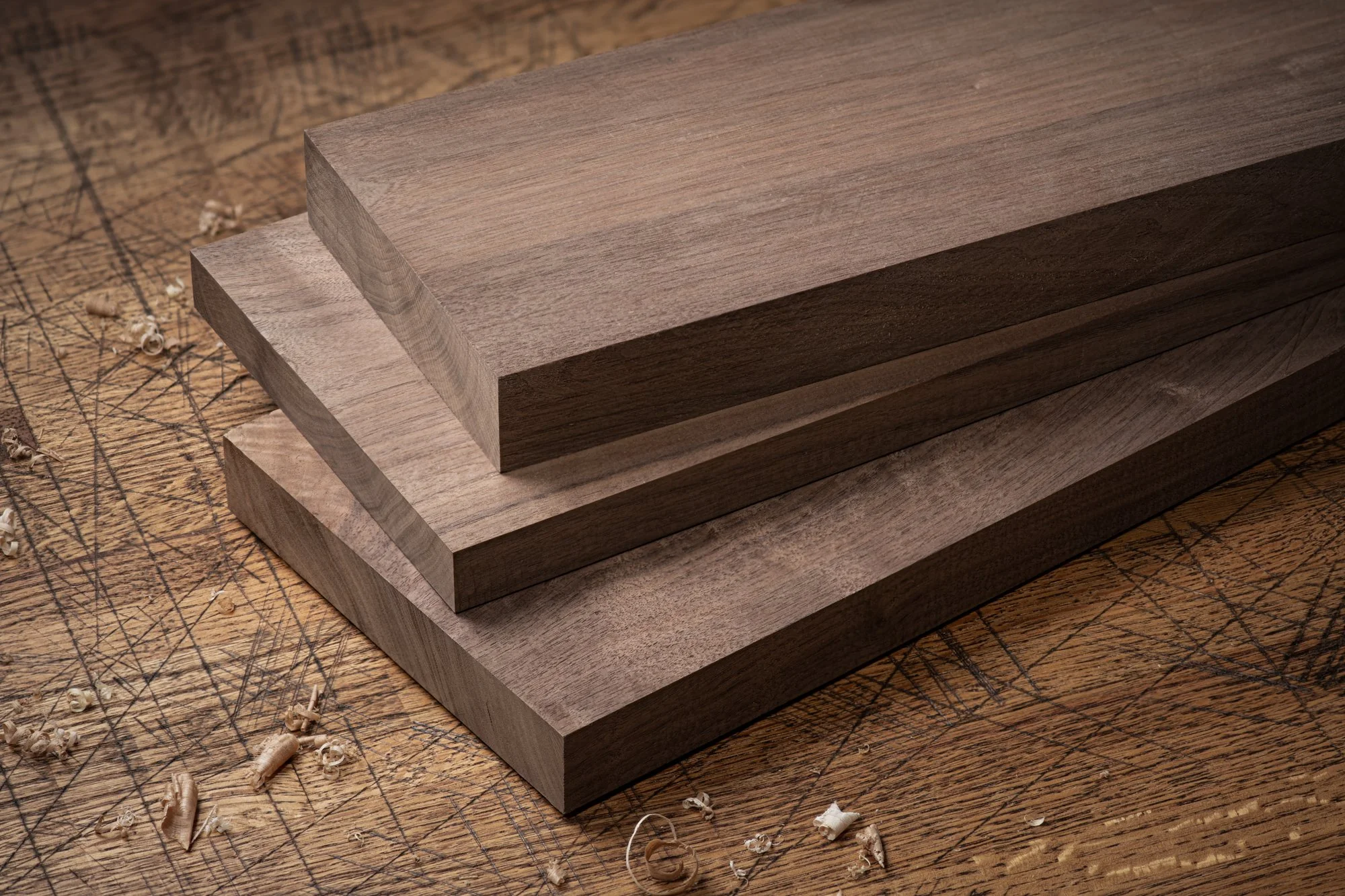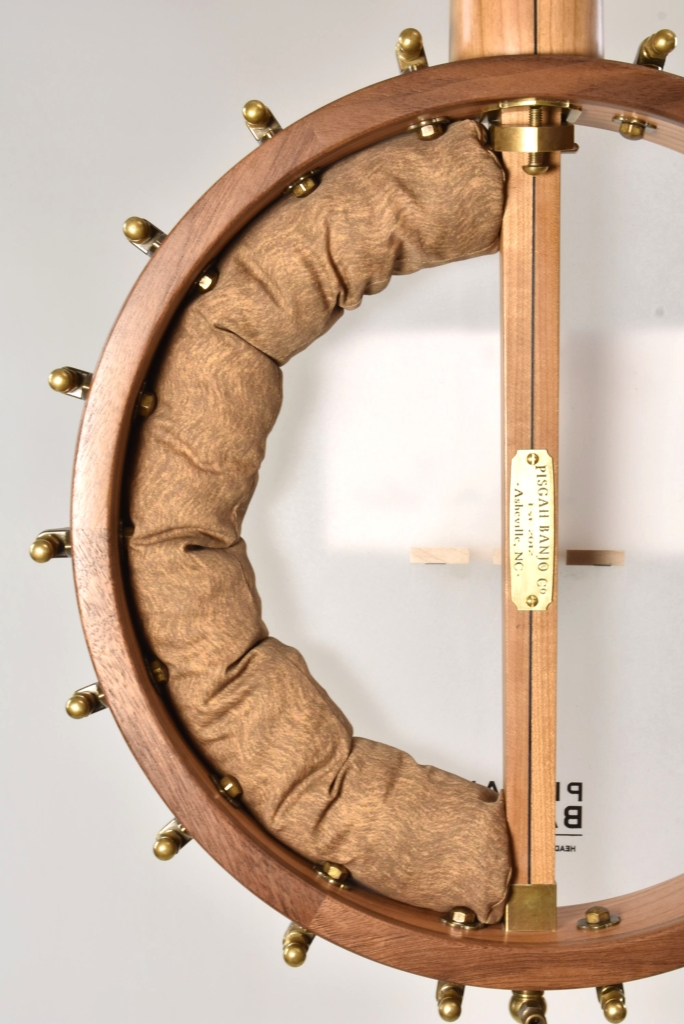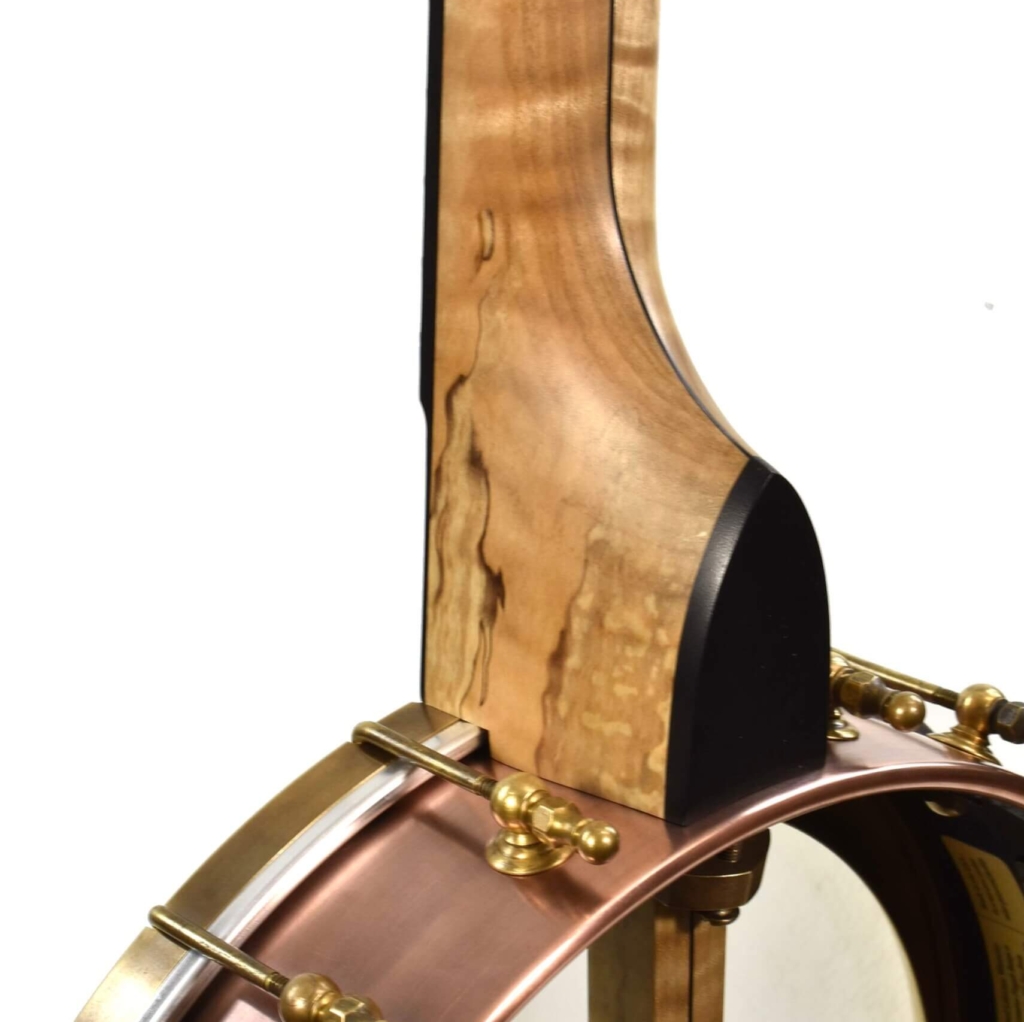
Written by: Patrick David Sawyer
As a banjo builder and avid player I’ve worked with a variety of domestic hardwoods—each bringing its own personality to the instrument. But time and again, I return to walnut as a personal favorite. Whether it’s the wood’s rich color, its tonal balance, or the way it shapes the character of an instrument, walnut stands out as one of the finest tonewoods available for open-back banjos.
At Pisgah Banjos, we harness the unique properties of walnut to craft banjos with exceptional warmth, clarity, and responsiveness. One of the best examples of this is our Roscoe model, which features a solid walnut tone rim—a choice that gives it a distinctive dark, plunky sound.
Let’s take a closer look at what makes walnut such an outstanding wood for banjos.
Walnut: A Premium Domestic Hardwood
One of walnut’s greatest advantages is that it is a domestic hardwood, widely available in North America. Specifically, Black Walnut (Juglans nigra) is native to the eastern and central United States and has been a prized material for fine woodworking for centuries.
Unlike exotic tonewoods that require international sourcing and can raise sustainability concerns, walnut is a responsible, locally-sourced alternative. It is durable, stable, and abundant, making it an excellent choice for musical instrument construction while supporting sustainable forestry practices. It even grows abundantly on the Pisgah Banjo Property!
In terms of workability, walnut is a dream for luthiers. It cuts cleanly, sands smoothly, and takes finishes beautifully. While harder than mahogany, it is not as dense as maple, allowing for a perfect balance between durability and resonance. This makes it particularly well-suited for tone rims and necks.
The Tonal Magic of Walnut
When selecting a tonewood, it’s all about finding the right balance between warmth, clarity, and projection. Walnut achieves this balance better than most woods.
1. Warmth & Resonance
Walnut has a warm, rounded tone that sits comfortably between mahogany’s richness and maple’s brightness. This means it enhances the deep, woody low end of a banjo while maintaining just enough brightness and clarity in the high notes.
2. Natural Compression
One of walnut’s standout tonal characteristics is its natural compression effect. It smooths out harsh frequencies, giving each note an even, articulate response. This is especially important in open-back banjos, where dynamic range and nuance matter.
3. Sustain & Projection
While softer woods can sometimes dampen sustain, walnut has just enough density to provide a strong, lingering note without overpowering the player’s attack. This makes it an excellent choice for any banjo playing style involving frailing, clawhammer or picking, ensuring clarity even when played with a light touch.
4. A Versatile Sound for Any Style
Some woods work best for specific playing styles, but walnut is versatile enough for a wide range of techniques. Whether you’re playing solo on your porch, in a jam session, or recording in a studio, a walnut banjo delivers a balanced, articulate, and expressive sound that adapts beautifully to different environments.
Why We Chose Walnut for the Roscoe Model
At Pisgah Banjos, we’re always looking for ways to combine tradition with innovation. The Roscoe model is a prime example of this. By incorporating a solid walnut tone rim, we’ve created a banjo that captures the vintage, dark, and mellow tones of classic old-time instruments.
Most banjo rims are made from maple, cherry, or mahogany, each of which has its own tonal fingerprint. However, for the Roscoe, walnut was the perfect choice because:
- It deepens the low-end response, giving it that rich, plunky sound.
- It smooths out the highs, reducing any sharp or harsh overtones.
- It provides a natural warmth, making the instrument sound aged and broken-in from the start.
- It adds a touch of sustain, ensuring notes ring out just long enough for clarity.
The combination of a walnut rim with a cherry neck gives the Roscoe an organic, balanced tonal character that feels alive in your hands. The aged brass hardware and plain square headstock further enhance its classic, old-time aesthetic.
To learn more about the Roscoe model and hear its unique voice, check out our official page.
Final Thoughts: The Beauty of Walnut in Banjo Building
Every time I finish a walnut banjo, I’m reminded why this wood is so special. It’s not just about how it looks (though it’s undeniably stunning), or even just about its tonal properties—it’s about the way it brings a banjo to life.
From its deep, warm sound to its sustainability and workability, walnut is an ideal choice for open-back banjos. Whether you’re a builder, a player, or simply a banjo enthusiast, once you experience the depth, clarity, and soul of a walnut banjo, it’s hard to go back.
Disclaimer: This perspective is based on years of experience working with different woods in banjo building. While walnut remains a favorite for its tonal and aesthetic qualities, each player and builder may have their own preferences. Choosing the right tonewood is a personal journey, and walnut is just one of many excellent options available.








